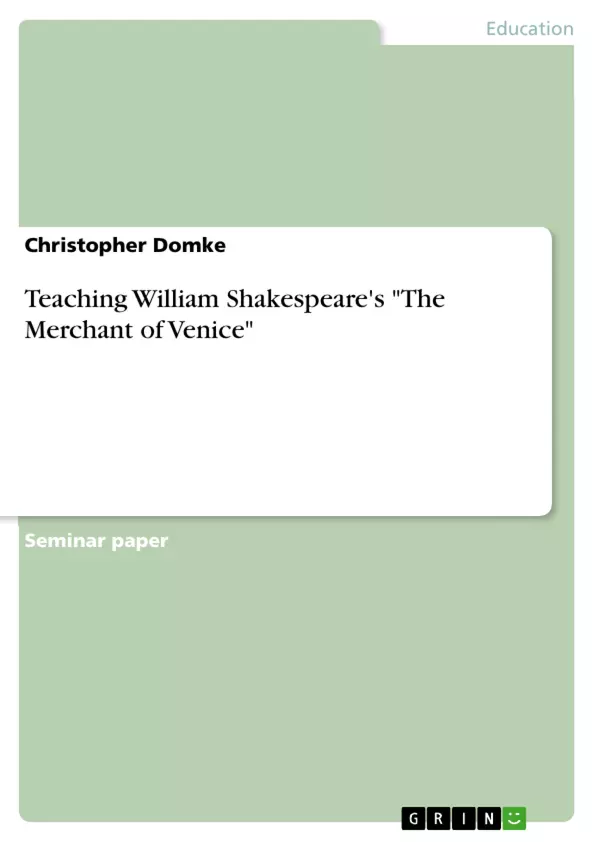This double lesson within a teaching unit dealing with William Shakespeare's The Merchant of Venice will be held in a grade 12 advanced course at a German High School (‘Gymnasium’) in Rhineland-Palatinate. The group of 24 students consists of 10 boys and 14 girls between the ages of 17 and 19.
Inhaltsverzeichnis (Table of Contents)
- Analysis of the 'Fictional' Group of Learners
- Analysis of the Subject Matter
- Didactic Analysis
- Learning Objectives
- Lesson Plan
- Methodological Analysis
- Teaching Material and Expected Answers (Appendix)
- Works Cited
Zielsetzung und Themenschwerpunkte (Objectives and Key Themes)
This teaching unit aims to provide students with a comprehensive understanding of William Shakespeare's The Merchant of Venice. The unit will focus on the play's themes, characters, and historical context, and will provide students with the opportunity to analyze and interpret the text through various activities and discussions.
- The relationship between Christians and Jews
- The theme of justice and mercy
- The role of revenge and prejudice in the play
- The use of language and imagery in Shakespeare's works
- The historical context of the play and its relevance to modern audiences
Zusammenfassung der Kapitel (Chapter Summaries)
- Analysis of the 'Fictional' Group of Learners: This chapter provides a detailed description of the target audience for this teaching unit, including their age, background, and level of English proficiency. It also highlights the positive learning environment in the classroom and the presence of two native English speakers.
- Analysis of the Subject Matter: This chapter focuses on the "Flesh-Bond Scene" (Act One, Scene Three) and the "Court Scene" (Act Four, Scene One) in The Merchant of Venice. It examines the historical context of the play, specifically the relationship between Christians and Jews, and how this relationship is reflected in the characters of Antonio and Shylock. The chapter also analyzes the contract between Antonio and Shylock and the consequences of its terms.
- Didactic Analysis: This chapter provides a comprehensive overview of the teaching unit, including its structure and objectives. It emphasizes the importance of exploring the relationship between Christians and Jews in the play and how this relationship develops throughout the narrative.
Schlüsselwörter (Keywords)
The key themes and concepts explored in this teaching unit include Shakespearean drama, The Merchant of Venice, Christian-Jewish relations, prejudice, justice, mercy, revenge, language, imagery, historical context, and textual analysis. The unit also examines the impact of the "Flesh-Bond Scene" and the "Court Scene" on the overall narrative of the play.
- Quote paper
- M.Ed. Christopher Domke (Author), 2015, Teaching William Shakespeare's "The Merchant of Venice", Munich, GRIN Verlag, https://www.grin.com/document/431054



